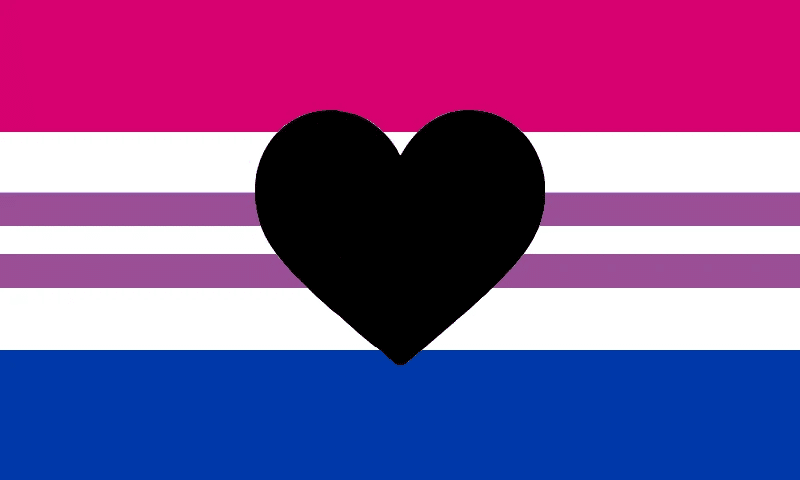Biromantic – What is it? What does it mean?
Biromantic refers to a romantic attraction to two or more genders. Biromantic people may or may not be sexually attracted to two genders as well. Biromantic individuals may sometimes have a gender preference.
The romantic attraction is similar to other pluralian identities like panromantic. Biromantics are not to be confused with bisexuals who are sexually attracted to two or more genders, but some may identify as both. Biromantic may sometimes be shortened to biro to refer to someone who is romantically attracted to people with the same or different gender as theirs.
Table of Content
Terminology
According to Dictionary.com biromantic is an adjective that means: noting or relating to a person who is romantically attracted to people of two or more genders.
The word itself consists of two parts. Bi which means two and romantic, often refers to love and affection in a romantic way. That means that a biromantic person experiences love and attraction to two or more genders on the gender spectrum. They are interested in a romantic relationship rather than a sexual relationship with multiple gender groups.
There is a common myth associated with being a biromantic individual. Two or more genders do not mean male or female. Many biromantics are attracted to other genders on the spectrum, some are solely attracted to nonbinary and gender-fluid people. Some want to build romantic connections with women and non-binary people but not men, others are romantically attracted to people of multiple genders but not women.
Also, an important note on the terminology. Biromantic does not equal bisexual. Biromantic describes the desire for romantic relationships, romantic feelings not sexual orientations. Those who identify as biromantic will often experience emotional attraction to two or more genders, their experience is different from sexual feelings.
So, if a biromantic person feels attracted to two or more genders it does not mean they will want to have sex with them. According to clinical sexologist Rachel Sommer, Ph.D. “It’s more about developing a deep-lying connection—the one you’d want in a long-term relationship.”
There truly is no single right or wrong way to be a biromantic person. Some may experience feelings towards cisgender men and women, others towards non-binary people, others to trans men and women, and so on. Biromantic experience is a variety of different romantic feelings when it comes to their romantic attraction to two or more genders. It is not a one-size-fits-all.
History
The word biromantic allegedly appeared somewhere in the late 1990s. However, the first known use of it was in a 2005 news article about asexual people. Biromantic is a term that relates to the split attraction model. Many believe that it first appeared on the form boards of the Asexual Visibility and Education Network (AVEN).
In 2008, a user Biromantic added the definition to Urban Dictionary describing it as:
Someone who enjoys behavior typically associated with dating and love, like cuddling, hugging, gift-giving, love notes, but probably not kissing, etc., and enjoys it with both genders, without necessarily desiring subsequent sexual experience. Biromantic people can be straight, bisexual, homosexual, or asexual.
Biromanticism and Sexuality
As said above, there is no one-size-fits-all when it comes to biromanticism. Biromantics do not all fit the same mold. A biromantic person may experience sexual attraction in a variety of different ways. There are:
- Biromantic asexual people who are romantically attracted to two or more genders but do not have any sexual desire. It has nothing to do with sexual drive but rather their sexuality.
- Biromantic demisexual people who are romantically attracted to two or more genders but only experience sexual arousal after developing a strong emotional bond
- Biromantic bisexual folks who are both romantically and sexually attracted to two or more genders
- Biromantic pansexual people who are romantically attracted to two or more genders but sexually do not have a gender preference
Differences
Biromantic vs. Bisexual
Many biromantic persons also identify as bisexual and vice versa. Biromantic folks are romantically attracted to people while bisexual individuals are sexually attracted to others. The terms are similar and sometimes may be used interchangeably but they are not synonyms.
Sexual and romantic attraction are two different things. The romantic attraction includes desires like relationships, nice gestures, dates. The sexual attraction is all about the desire to have sex with the other person, be intimate with them.
Romantic attraction and sexual attraction do not always go hand-in-hand. A biromantic person may only want to develop emotional relationships with the objects of their attraction, while a bisexual person will want to have sexual relationships with them as well.
Biromantic Vs. Panromantic
People have a tendency to confuse the biromantic and panromantic romantic orientations. Both refer to people who are romantically attracted to more than one gender but despite the overlap in developing a romantic connection there is a clear distinction between them.
Biromanticism refers to romantic attraction to two or more genders whereas panromanticism means that people who experience it are attracted to all genders. The prefix pan means all, it encompasses the person’s ability to have romantic feelings to all genders including binary and non-binary people’s identities.
Biromantic people develop feelings for certain gender identities while panromantic people may be attracted to people of all gender identities.
There are some biromantics that may also refer to themselves as panromantic. Ultimately, a label is an individual preference.
Flag & Symbols
There are several versions of the biromantic flag available online today. The original biromantic flag was created in 2016. It features a greyish heart on top of a bi pride flag
 Biromantic flag
Biromantic flag
Another more inclusive alternate biromantic flag was created fairly recently in 2021. It features an expanding purple stripe to represent non-binary people with a color gradient to represent a greater number of gender identities and expressions.
 RemyWest123’s alternate biromantic flag
RemyWest123’s alternate biromantic flag
Pronouns
Biromantic people can be of many different genders and any sexual orientation. Biromantic folks may use gendered pronouns like he/him or she/her. Some biromantic individuals may prefer to use they/them or pronouns that are gender neutral like xe/xem or ze/zir.
Remember that it is always important to use inclusive language regardless of the situation you are in. Share your pronouns first and ask a biromantic person about their preferred pronouns. Never assume someone’s gender based on their romantic attraction, sexual orientation, or gender expression.
How to Know If You Are Biromantic?
If you feel the label biromantic fits well with your identity then go ahead and claim it to yourself. Biromantic may be the right identity for you if:
- You have experienced romantic attraction or emotional feelings towards people of more than one gender
- You have felt an emotional connection to people of two or more genders without experiencing sexual attraction to them
- You were curious about non-monogamous relationships or relationships that were not exclusive
That said, there are many biromantic individuals who are monogamous and dating only one person of one gender. This fact does not make them any less biromantic. If a person is romantically attracted to different genders they may feel biromantic is the best label to describe them.
A resident sex researcher at ASTROGLIDE Justin Lehmiller says: “being biromantic means different things to different people. It’s probably best characterized as a romantic attraction to more than one gender category as opposed to romantic attraction to all genders.”
It is important to explore your romantic orientation. A deeper understanding of the whole self may lead to a new, healthier, and much more fulfilling life. That said, you do not have to come out as biromantic if you do not feel comfortable doing so. If you choose to come out to your loved ones, please do it in a way that is safe for you. It may help you live your authentic and honest life.
Remember that your sexual orientation and romantic orientation are not the same. This means your label as a biromantic person may potentially include other identity and orientation labels. You may choose to identify as a biromantic asexual, biromantic demisexual, biromantic bisexual, or other labels that fit your romantic and sexual orientation best.
Biromanticism Myths
There are many myths associated with being biromantic. Some of them stem from the fact that biromanticism is a fairly new term and most people associate it with promiscuity. Others view it as a term that isn’t used very often, so the lack of knowledge spurs misconceptions about this romantic attraction.
Myth 1: Biromantic is not a valid identity. It is a term that originated online and people use it to justify promiscuity. This is indeed a myth. Biromantic has been in existence for over twenty years. It describes romantic attraction rather than sexual attraction. It also has absolutely nothing to do with being in polyamorous, non-monogamous relationships. Many biromantic persons do not ever date multiple people at a time. Those who identify as biromantic can be in long-term committed relationships with one partner.
Myth 2: Biromantic is just a phase. Similar to what bisexual people experience on a daily basis, biromantic persons also get to hear a fair share about their romantic orientation. To be frank, any non-heteronormative orientation or relationship may be viewed as just a phase by people who are cisgender heterosexual. This is not true. People’s romantic orientation may stay for life, but it may also shift, that is absolutely fine. This does not mean it was or is just a phase.
Myth 3: Biromantics can’t have monogamous relationships. For some reason, there is a belief that people who are attracted to two or more genders are going to date two or more genders at the same time. This is definitely a misconception. Biromantics can and often do have a desire to be in a monogamous relationship with a partner whose gender identity is often not a factor. They are often very happy and satisfied in monogamous relationships.
Biromantic Relationships
Biromantic people may form relationships with a multitude of genders. They may be in relationships that are with people of the same gender identity as themselves, people who are cisgender, transgender, non-binary, genderfluid. Some biromantics may also be in straight-passing relationships. This does not mean that a biromantic person is no longer bi.
There are also polyamorous biromantics that may be in relationships with more than one person at a time. Biromantics may form a variety of romantic and sexual relationships.
Supporting Biromantic People
It is always important to remember that people in the LGBTQ+ community continue to face discrimination, harassment, and bullying. They may often experience rejections from those closest to them like their parents and siblings. LGBTQ+ youth are extremely vulnerable and have an increased risk of mental health issues and suicide.
So, supporting LGBTQ+ people who identify as biromantic is crucial in helping get rid of the stigma. If you would like to support biromantic people you can start by doing some of the following:
- Educate yourself and others on biromanticism
- Join LGBTQ+ Facebook groups that work with bi people
- Attend marches, conferences, parades
If your family member or a friend identifies as biromantic, always let them know that you are there for them. Avoid being judgmental and listen to the person rather than offer unnecessary advice. Provide words of encouragement and validation. At the end of the day, it is their journey to take and you should be thankful for the fact that they chose to share their identity with you.
If you are biromantic and would like to find support start by:
- Seeking out a qualified therapist or counselor to help you come to terms and navigate your romantic identity.
- Finding a community of like-minded individuals like on Taimi app
- Joining social media groups for biromantic and bisexual people
- Celebrating bi identity by waving the biromantic flag during Pride month.
Gallery
 An alternate version of the biromantic flag featuring a heart
An alternate version of the biromantic flag featuring a heart
 Another alternate version with a different color scheme
Another alternate version with a different color scheme
 An alternate version of the biromantic pride flag
An alternate version of the biromantic pride flag
 A version of the biromantic flag featuring a black heart
A version of the biromantic flag featuring a black heart


